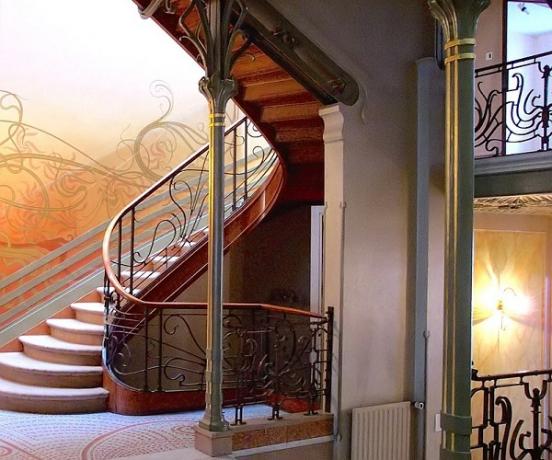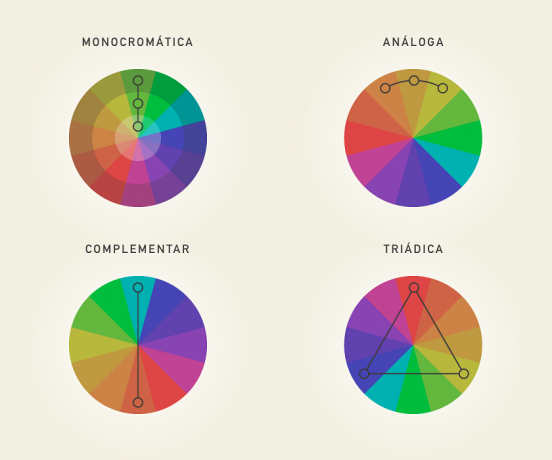Art Nouveau is the name of a artistic movement started in Europe during the 19th century. Its apex lasted until the mid-20s. It was very representative of what was happening in society at the time, which was experiencing industrial advances and social changes, such as the growth of the industrial bourgeoisie.
It arose as a desire to break with the artistic models that existed until then, especially the standard of academic art, which was based on and inspired by the most classic standards of Fine Arts.
The movement, called Art Nouveau in Portuguese, has diversified a lot and encompassed different areas of artistic expression, such as: plastic arts, architecture and design. It also had considerable expression in the decorative arts, such as furniture design and stained glass production.
One of its main features was the search for originality, both in the form of expression, and in the use of materials that had been little explored in the arts until then.
Based on this desire for innovation, new techniques were also used, such as woodcuts (a technique that uses carved wood as a basis for the production of prints).
Characteristics of the Art Nouveau
Get to know some of the main characteristics that represent this artistic movement:
- insertion of materials still little used in the arts, such as glass, wood, iron and cement;
- presence of elements of logical, mathematical and rational knowledge;
- opposition to the characteristics of Romanticism in the arts, a break with the romantic aesthetics used until then;
- strong presence of organic elements such as flowers, plants and foliage;
- influence of techniques used in Japanese art;
- use of more rounded lines and shapes, which gave movement and elegance to the works;
- influenced Arts and Crafts, a current of artistic thought that emerged in England, which extolled art produced from manual and creative processes, in clear opposition to the effects of industrialization on the arts;
- strong presence of the female figure, the image of the woman was very recurrent in the artistic production of the movement;
- use of arabesques;
- use of techniques such as lithography and woodcutting,
- influence of baroque characteristics, such as detail,
- it represented the social context of the time, such as the increase in production in industry and the bourgeois class that emerged from this new moment.
See also the meanings of arabesques and woodcut.
Main artists of Art Nouveau
- Antoni Gaudí (1852-1926): the Spanish architect had considerable influence from the movement Art Nouveau in your work. Gaudí used, for example, stained glass and iron in his designs. Ceramics is also an element that appears a lot in his work. Among his best known works are: Parque Güell, Casa Batlló, Sagrada Família Church and Casa Milà, all located in Barcelona.
 Details of Park Güell, designed by Gaudí.
Details of Park Güell, designed by Gaudí.
- Alfons Mucha (1860-1939): Born in the Czech Republic, he is one of the best-known painters in the Art Nouveau. In his illustrations, he used the technique of lithography and portrayed many women adorned by nature.
 Zodiac, one of the many illustrations Art Nouveau of Mucha.
Zodiac, one of the many illustrations Art Nouveau of Mucha.
- Victor Horta (1861-1947): is one of the great names of Art Nouveau in architecture. In his projects, he made use of materials such as iron, wood and stained glass, striking features of the style. Constructions like the Tassel House and the Casa van Eetvelde (in Brussels) are architectural works by Victor that represent the Art Nouveau.
 Characteristics of the art nouveau present in the details of the Tassel couple, designed by Victor Horta.
Characteristics of the art nouveau present in the details of the Tassel couple, designed by Victor Horta.
- Gustav Klimt (1862-1918): the Austrian painter is another important representative of the Art Nouveau, having been important for the movement to gain strength in Austria. In her works, women, geometric and decorative figures, characteristics of the Art Nouveau, are very present.
 Until then The kiss is one of Gustav Klimt's most famous paintings.
Until then The kiss is one of Gustav Klimt's most famous paintings.
Historical context of Art Nouveau
The emergence of the movement is related to the period of Second Industrial Revolution and all the changes brought with it:
- increase in the industrialization process,
- growth in the number of workers on production lines,
- development of the bourgeoisie,
- all other social changes that resulted from this process.
THE Art Nouveau it became a movement that critically integrated some characteristics of industrial society, reflecting these particularities in the works produced and the materials used.
You may also be interested in: Second Industrial Revolution.
THE Art Nouveau in Brazil
In Brazil, the style also started to become known at the end of the 19th century. Italian painter Eliseu Visconti (1866-1944) is one of those responsible for the movement's arrival in the country. He used printing and design techniques, in addition to using stained glass and ceramics in his works.
As happened in Europe, in Brazil the Art Nouveau he also changed artistic production, leaving marks in the fine arts in general, in design and in architecture.
It had characteristics of belle epoque, French period that, in artistic production, was characterized by the use of natural forms and curved lines, in addition to the use of strong colors.
Read more about belle epoque and also see the meanings of Art and art history.
Discover other artistic movements: Impressionism, Cubism, Romanticism, Baroque, Expressionism, Realism, Dadaism and Modernism.


